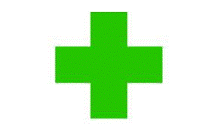Plant Health Program, Doctor of

Doctor of Plant Health Program: Dissertations and Student Research
First Advisor
Gary L Hein
Date of this Version
Spring 5-2021
Abstract
Technology development has radically shaped science communication techniques. Science communicators should be prepared to face these changes as they provide valuable new methods for increased engagement. Currently, communicators rely on deficit models (top-down transmission) and dialogic models (bottom-up transmission) to present information. The decision on which model to use is reliant upon the communicator’s skill level and impression of the relationship between scientists and the general public. Developing effective communication relies on communicators determining goals (long-term aspirations) and objectives (short-term aspirations) while maintaining a clear view of the public’s attitudes and evaluation frames. The tools available to science communicators and the likelihood of information becoming misinterpreted have both increased with technology improvements. Communicators should understand how to leverage traditional media, online media and social media to maximize engagement and outreach. Two retroactive assessments of internship case studies reflect upon the efficacy and application of science communication concepts through face-to-face and online methods.
Advisor: Gary L. Hein
Included in
Communication Technology and New Media Commons, Educational Methods Commons, Science and Technology Studies Commons


Comments
A DOCTORAL DOCUMENT Presented to the Faculty of The College of Agricultural Sciences and Natural Resources In Partial Fulfillment of Requirements For the Degree of Doctor of Plant Health, Major: Plant Health, Under the Supervision of Professor Gary L. Hein. Lincoln, Nebraska: May, 2021
Copyright © 2021 Emily M. Stine